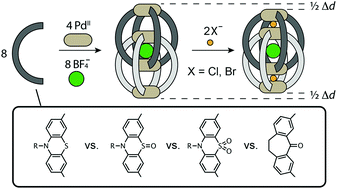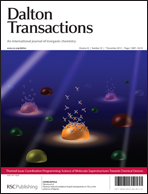Relative anion binding affinity in a series of interpenetrated coordination cages†
Abstract
Previously, we have reported on the quantitative self-assembly of a series of interpenetrated double-cages [Pd4Ligand8] with

- This article is part of the themed collection: Coordination Programming: Science of Molecular Superstructures Towards Chemical Devices

 Please wait while we load your content...
Please wait while we load your content...